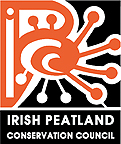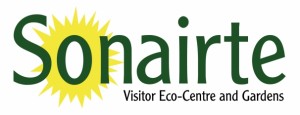Beat the blues and escape to nature

[cs_content][cs_section parallax=”false” style=”margin: 0px;padding: 45px 0px;”][cs_row inner_container=”true” marginless_columns=”false” style=”margin: 0px auto;padding: 0px;”][cs_column fade=”false” fade_animation=”in” fade_animation_offset=”45px” fade_duration=”750″ type=”1/1″ style=”padding: 0px;”][cs_text class=”cs-ta-justify”]According to some, Monday was the gloomiest day of the year. What better way to reinvigorate yourself and get through the rest of the month unscathed then by exploring some of Ireland’s amazing natural amenities.[/cs_text][x_image type=”none” src=”https://greennews.ie/wp-content/uploads/2017/01/View_across_Dunlewy_Lough_-_geograph.org_.uk_-_431325.jpg” alt=”” link=”false” href=”#” title=”” target=”” info=”none” info_place=”top” info_trigger=”hover” info_content=””][x_gap size=”50px”][cs_text class=”cs-ta-justify”]Take a hike in Crocnafarragh and Glenveagh National Park 
Located in the Northeast of the country in Donegal, Crocnafarragh is a sprawling 2600 hectare reserve forming part of Glenveagh National Park. The site plays host to an array of habitat types including large expanses of blanket bog, grassland, woodland and lakes. These habitats are home to many different plants and animal. Visitors to Crocnafarragh might expect to see Mountain Hare, European Golden Plover, Red-throated Diver and even the Golden Eagle which were reintroduced to the park in 2001.
Crocnafarragh is owned by An Taisce, The National Trust of Ireland and is leased by the National Parks and Wildlife Services who have incorporated the reserve into Glenveagh National Park.
The park is open all year round and admission is free.
For more information visit An Taisce.[/cs_text][x_gap size=”50px”][x_image type=”none” src=”https://greennews.ie/wp-content/uploads/2017/01/767118070_1e6650ead9_b.jpg” alt=”” link=”false” href=”#” title=”” target=”” info=”none” info_place=”top” info_trigger=”hover” info_content=””][cs_text class=”cs-ta-justify”]Go Bird Watching in The Wexford Wildfowl Reserve 
Situated just outside Wexford town, the Wexford Wildfowl Reserve makes for a great day out. This magnificent reserve is situated on a piece of land reclaimed from the sea in the 1800’s and mainly consists of farmland and brackish waters. There have been over 250 species of bird recorded on the reserve, the most impressive being the Greenland White-fronted Geese. Over the winter period over 45% of the world’s population of these majestic Geese call the reserve and surrounding area home, making January the perfect time to pay a visit.
There are a number of hides and an 8 meter tall observation tower on the reserve which can be used for bird watching. All hides are open from 9 am to 5pm.
Wexford Wildfowl Reserve is jointly owned by Birdwatch Ireland and The National Parks and Wildlife Services.
The reserve is open all year round and admission is free.
For more information visit Birdwatch Ireland.[/cs_text][x_gap size=”50px”][x_image type=”none” src=”https://greennews.ie/wp-content/uploads/2017/01/5086668918_1ab19412fc_b.jpg” alt=”” link=”false” href=”#” title=”” target=”” info=”none” info_place=”top” info_trigger=”hover” info_content=””][cs_text class=”cs-ta-justify”]Visit Lullymore West Bog and The Bog of Allen Nature Centre 
Located near Rathangan in Co. Kildare, Lullymore West Bog is a regenerated cutaway bog, which was previously the site of commercial peat extraction. The bog was donated by Bord na Mona to the Irish Peatland Conservation Council (IPCC) in 2005. Since then, the IPCC has worked to return Lullymore to it’s natural state The bog now plays host to an array of wildlife and includes a number of different habitat types such as grassland and scrub woodland. There are over 300 different species of plants, insects, birds and other animal to be found. Lullymore West Bog is a spectacular example of how bog regeneration can work to restore biodiversity
While here, also pay a visit to the Bog of Allen Nature Centre. The centre, which is run by the IPCC, is located close to the bog. This international peatland education centre features a museum, an exhibition on the Bog of Allen, a research library, Wildlife Gardens and the largest collection of carnivorous plants in Ireland and the U.K.
Lullymore West Bog and the Bog of Allen Nature Centre are open all year round. There is a small entrance fee into for the nature centre.
For more information visit the IPCC website.
[/cs_text][x_gap size=”50px”][x_image type=”none” src=”https://greennews.ie/wp-content/uploads/2017/01/DSC0405.jpg” alt=”” link=”false” href=”#” title=”” target=”” info=”none” info_place=”top” info_trigger=”hover” info_content=””][cs_text class=”cs-ta-justify”]Visit Sonairte and take a walk along the River Nanny
Located along the banks of the River Nanny near Laytown, Co. Meath, Sonairte is an eco-centre run entirely by volunteers. The centre was established in 1986 by the local community and environmentalists. Since the centre’s inception it has grown into both a visitor attraction and an educational centre.
There are a number of different attractions to see at Sonairte, including the thriving walled organic garden, the nature trail and riverwalk (packed with biodiversity), Bee Boles Beekeeping Museum, the eco-shop and the Sunflower Cafe. There is also a monthly food and craft markets held on the last sunday of each month.
Sonairte is open all year round from Tuesday to Sunday 10.30am to 5:00pm.
For more information visit Sonairte website.[/cs_text][x_author title=”About the Author” author_id=””][/cs_column][/cs_row][/cs_section][/cs_content]







